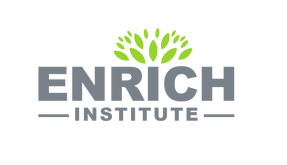|
Cambodia is regarded as one of the most successful post-conflict developing countries – transforming from a war-torn country to a liberal market economy with a high degree of economic openness and high economic performance. In 2016, Cambodia’s total export volume was $9.2 billion – accounting for 46.3 percent of GDP. Total import volume reached $12.8 billion – accounting for 64.2 percent of GDP. These figures clearly demonstrate that Cambodia’s economy is well connected to the global economy. So maintaining an open and robust international economic system benefits Cambodia. The Asian Development Bank (ADB) calls Cambodia “Asia’s New Tiger” after two decades of high economic performance with a GDP average growth rate of above seven percent. The poverty rate has dropped to 13.5 percent and 82.8 percent of the population aged 15 years and above is employed.
The per capita income has increased from $288 in the year 2000 to $1,307 in 2016, making Cambodia a lower middle-income country. The accumulated foreign direct investment (FDI) inflow reached about $20 billion from 1994 to 2014, as reported in a survey jointly conducted by the National Bank of Cambodia and the National Institute of Statistics last year. The manufacturing sector was the top receiver of FDI with $4.6 billion, followed by real estate with $2.9 billion, agriculture with $2.7 billion, the financial sector with $2.3 billion, energy with $2.1 billion, the services and hospitality industry with $2.1 billion as well as another $2.5 billion in smaller sectors. “Cambodia’s large supply of inexpensive, low-skilled labor has attracted substantial foreign direct investment into the production of garments and footwear for export,” said the Asian Development Outlook for 2016. However, the development disparity between urban and rural areas and the inequality in income and opportunities have been widening over the years, which in turn adversely affects public trust and confidence. Weak governance, the depletion of natural resources, climate change, indebtedness, landlessness, a lack of access to education and healthcare, poor hygiene and sanitation and fluctuations in the price of agricultural products are the main threats to the livelihoods of the households in rural areas, which constitute about 75 percent of the total population. Therefore, the national development strategy needs to be revised by introducing a more inclusive and sustainable development model to ensure that every Cambodian will enjoy the fruits of economic development. A study by the ADB in 2014 identified five main constraints in promoting inclusive development in Cambodia, which were (a) human capital (a poorly educated population and inadequately skilled workforce), (b) the electricity supply (restricted availability, expensive and unreliable), (c) the transport network (poor rural roads, inadequate ports and inland waterways), (d) corruption, and (e) weak governance, as well as low access to health services, water and sanitation. Cambodia needs to address these constraints by investing more in inclusive education and skills development, affordable health services, urban-rural infrastructure linkages, rural infrastructure development, access and affordability to electricity and quality public services. The World Economic Forum’s 2017 report introduces five key instruments in promoting inclusive growth and development, which include (a) the building blocks of human potential and opportunity, (b) sound institutions, business and political ethics, (c) the productive allocation of financial resources, (d) decent jobs, wages and livelihoods, and (e) equitable taxation and social protection. The report suggests that national governments need to “reconceptualize domestic structural reform” to better diffuse and redistribute the economic gains and opportunities and national income – thereby deepening the foundations and broadening the base of growth. For Cambodia to sustain long-term stability and development, it needs to develop a policy and institutional ecosystem that supports inclusiveness, especially through implementing inclusive education, inclusive healthcare, inclusive finance, rural infrastructure, gender, climate change adaptation and social protection to mitigate crisis or external shocks. Chheang Vannarith is a visiting fellow at the ISEAS-Yusof Ishak Institute in Singapore. This article was originally published in Khmer Times on May 01, 2017
0 Comments
Leave a Reply. |
Categories
All
Archives
October 2017
Disclaimer: All views expressed here belong to their respective author and do not represent the views of Enrich Institute
|

 RSS Feed
RSS Feed
